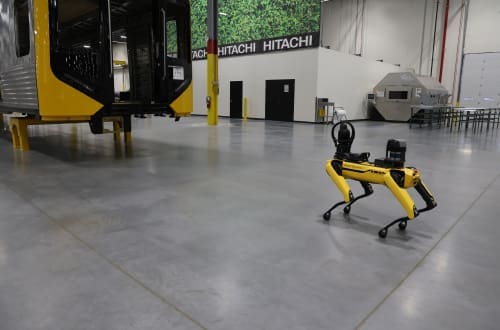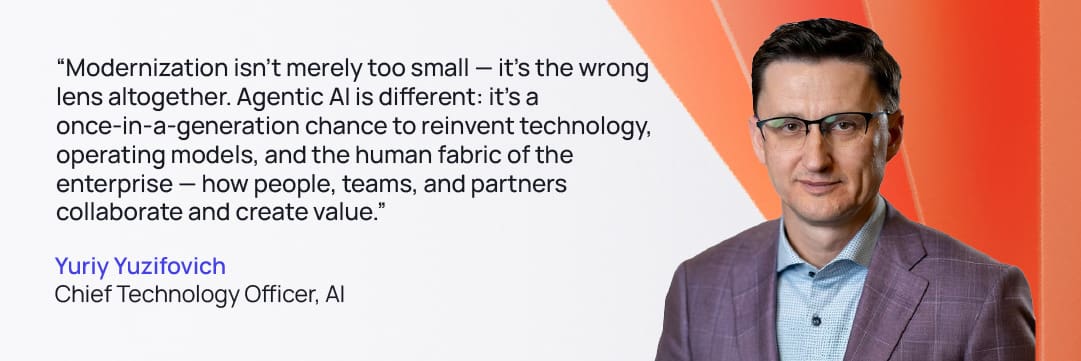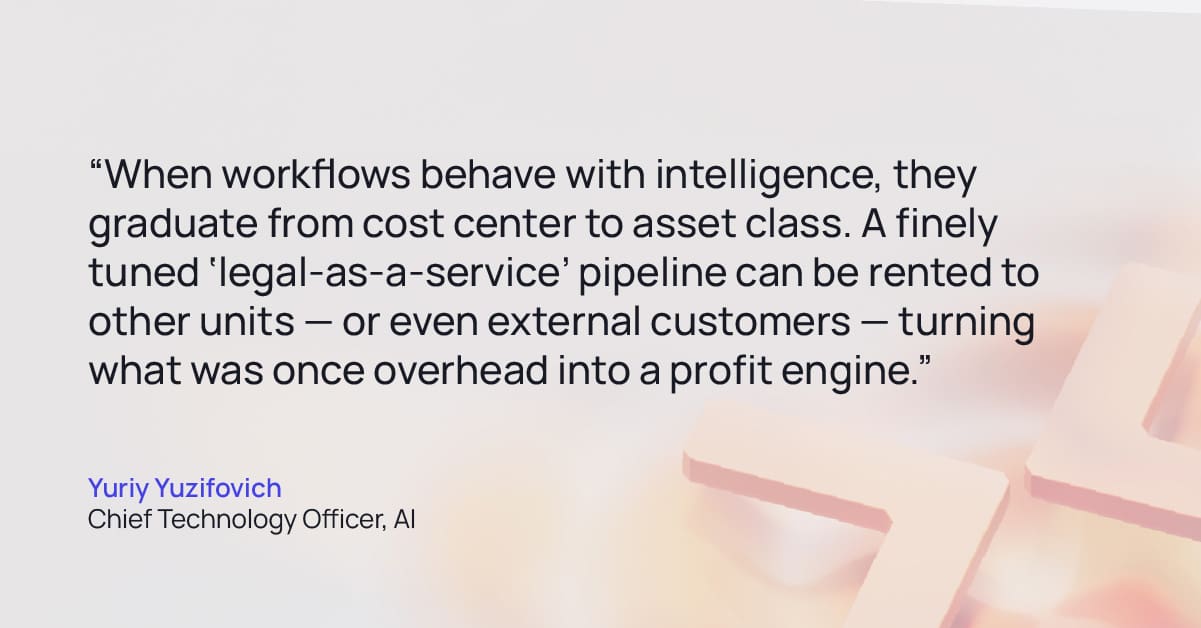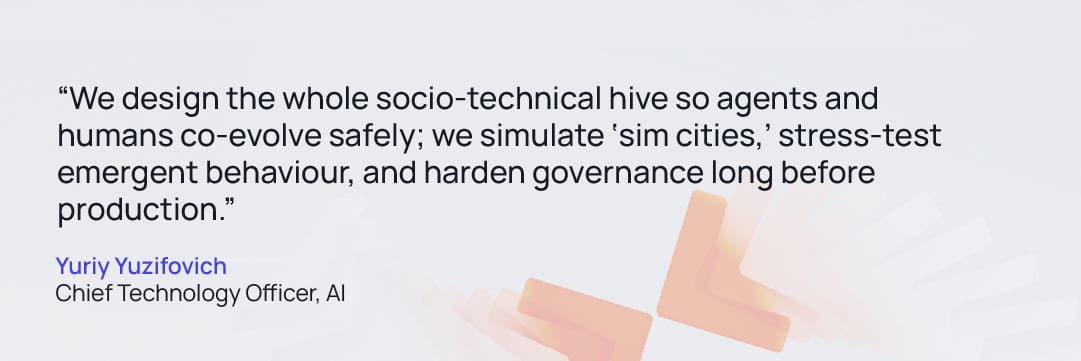- Services
Technology Capabilities
Technology Capabilities- Product Strategy & Experience DesignDefine software-driven value chains, create purposeful interactions, and develop new segments and offerings.
- Digital Business TransformationAdvance your digital transformation journey.
- Intelligence EngineeringLeverage data and AI to transform products, operations, and outcomes.
- Software Product EngineeringCreate high-value products faster with AI-powered and human-driven engineering.
- Technology ModernizationTackle technology modernization with approaches that reduce risk and maximize impact.
- Embedded Engineering & IT/OT TransformationDevelop embedded software and hardware. Build IoT and IT/OT solutions.
- Industries
- GlobalLogic VelocityAI
- Insights
BlogsDecember 16, 2024Gene LeybzonAccelerating Digital Transformation with Structured AI Outputs
This code produces the following output that can be imported into the candidate trackin...
 BlogsOctober 30, 2024Yuriy Yuzifovich
BlogsOctober 30, 2024Yuriy YuzifovichAccelerating Enterprise Value with AI
Discover how financial services integrations are transforming from standalone offerings...

- About Us
Press ReleaseGlobalLogicSeptember 23, 2025Hitachi agrees to acquire German data and AI services firm ...
Strengthening GlobalLogic’s data and consulting capabilities and expanding footprint in...
 Press ReleaseGlobalLogicSeptember 10, 2025
Press ReleaseGlobalLogicSeptember 10, 2025GlobalLogic and Ericsson Deploy Private 5G Network at Hitachi ...
The new infrastructure is the digital backbone of the Hagerstown plant, enhancing effic...

- Careers
Published on October 20, 2025Beyond Modernization: Reinventing the Enterprise with Agentic AI
ShareRelated Content GlobalLogic1 December 2025
GlobalLogic1 December 2025 GlobalLogic27 November 2025View All Insights
GlobalLogic27 November 2025View All Insights GlobalLogic19 November 2025Recommended authorsSenior Vice President & Head of EMEAVice President & Consumer Business, Americas GlobalLogicView all authorsVice President, Financial Services & Consumer Business CTO, Americas & UKI
GlobalLogic19 November 2025Recommended authorsSenior Vice President & Head of EMEAVice President & Consumer Business, Americas GlobalLogicView all authorsVice President, Financial Services & Consumer Business CTO, Americas & UKILet's start engineering impact together
GlobalLogic provides unique experience and expertise at the intersection of data, design, and engineering.
Get in touchAgentic AIEnterprise AICross-IndustryEvery major enterprise now faces the same decision: will you continue running workflows as human-supervised routines, or will you promote them into autonomous systems that learn and adapt at machine scale? That choice will determine which firms keep tuning yesterday’s engines, and which reinvent the vehicle entirely.
For decades, modernization meant upgrading architecture or swapping stacks: retire legacy code, lift workloads into cloud, refresh user interfaces. It’s valuable work that paves the way for improved maintenance and upgrades. But it’s incremental and aimed at IT operational efficiency, not business transformation. Agentic AI builds on that base by transforming the enterprise from a collection of applications into a living ecosystem of interoperating agents.

With Agentic AI, software teammates don’t just execute tasks; they plan, negotiate, and learn like colleagues, continuously, across time zones and silos, at a scale humans cannot match. More than faster workflows, these are autonomous value loops: sensing, deciding, and acting like an immune system, improving with every cycle, all under human guardrails.
When deployed with discipline, these ecosystems don’t just cut costs or accelerate tasks. They rewire how value is created — turning overhead into products, contracts into living agreements, and processes into platforms. This is enterprise reinvention.
Why Now
Three forces converge to make this shift urgent:
- Complexity has outpaced control. Multi-cloud estates and global supply chains now behave less like workflows and more like digital cities: dynamic, interdependent, and impossible to manage with static playbooks.
- AI has crossed a threshold. What were once narrow tools are now reasoning agents that absorb context, coordinate with one another, and run 24×7 at machine scale.
- Business pressure has shifted the goal. The margins from modernization are tapped out. Advantage now comes from governing constellations of agents; living digital teams that collaborate safely at scale.
This is the difference between the automobile and the faster horse. Modernization made the horse stronger and faster. Agentic AI builds the car and with it, an entirely new road system.
Recommended reading: The Future of Agentic AI – Designing Reliable Systems for Enterprise Success
From Workflows to Value Loops
Traditional processes are linear: data goes in, decisions are made, work gets completed. It’s useful, but brittle.
Agentic loops are cyclical and adaptive:
- Sense. Agents scan signals across systems, customers, suppliers, and devices.
- Decide. Context, policies, and goals guide the next best action.
- Act and Learn. Work is executed, logged, and improved in real time.
Humans remain firmly in control — setting direction, monitoring outcomes, and enforcing guardrails. But the day-to-day orchestration shifts to a living ecosystem. Like an immune system, agents detect anomalies, respond instantly, and strengthen the enterprise with every iteration.
Recommended reading: GlobalLogic’s MCP Factory – Transform Your APIs into Agentic Powerhouses
What This Looks Like in Practice
Processes become products. When workflows evolve into autonomous loops, they stop being overhead and start behaving like services that can be scaled or even monetized. A claims pipeline or compliance check can become an internal product — or even a revenue stream.
Ecosystems adapt like immune systems. Instead of waiting for a quarterly review, supply-chain agents renegotiate in real time, contracts refactor themselves, and resilience emerges automatically.
Knowledge becomes a shared fabric. Agents weave scattered manuals, emails, and institutional memory into a living semantic graph. Overnight, the entire enterprise “remembers” and improves.
Customer experience becomes anticipatory. Agents move beyond scripted empathy to prescience: predicting failures, orchestrating resolutions, and offering solutions before the customer ever notices the issue.
Products evolve into platforms. Agents embedded in equipment, portfolios, or mobility systems learn as they operate, turning every product into a service and every service into a flywheel.

Proof It Works
This isn’t theory. At GlobalLogic, production agents already support tens of thousands of our own employees.
- A proposal agent cut time to first draft by ~70%, while raising consistency of messaging.
- Learning agents reduced certification timelines by 15–20%, freeing engineers for higher-value work.
- Matching and delivery agents standardized estimates and improved predictability across programs.
These patterns are the same we deliver for clients. Each begins with a high-friction process, then scales to new lines of value creation.
From Pilot to Profit: Capturing Value Quickly
Agentic AI is not a moonshot, nor is it a proof-of-concept exercise destined for the lab. The initial phase is about putting agents into targeted production use in a handful of workflows where complexity, latency, or cost are most visible to the business.
Common entry points include service triage, where response time shapes customer experience, operations planning, where schedules and inventories shift daily, and knowledge-heavy reviews such as contracts, compliance, or quality checks that create bottlenecks.
When agents enter these domains, the impact is immediate: cycle times shrink, costs decline, and new monetization pathways emerge. In one enterprise, a contract-review workflow evolved into an internal “legal-as-a-service” platform. In another, predictive maintenance routines for field equipment became a subscription offering to customers. What begins as incremental savings often uncovers the seeds of new revenue lines.
Reasonable outcomes from initial pilots:
- 20–40% cycle-time reduction in targeted workflows
- 10–15% cost takeout in the selected operating bands
- 1–2 workflows promoted into monetizable “products” at pilot scale
The most important outcome is executive confidence and the ability to move beyond pilots and scale responsibly. Without that, competitors will move first. Leaders see for themselves how a process behaves when it stops running as a linear routine and starts operating as a living, continuously adapting system. With governance and guardrails in place, enterprises can expand from selective wins to broad reinvention.
Making It Safe and Real
What makes Agentic AI viable for enterprise is the discipline of building governed systems that behave more like living organisms than isolated tools.
- Open interoperability. Our agents speak open standards so they can traverse GCP, Azure, AWS, on-prem, captive SaaS environments, and edge environments without vendor lock-in. This ensures your ecosystem grows like a federation, not a silo.
- Shared knowledge fabric. Every agent draws from a single, interconnected knowledge base of enterprise policies, processes, and data. This unified “memory” prevents divergence and keeps all decisions consistent and auditable.
- Governance by design. Security, compliance, bias monitoring, and even carbon budgeting run as a single pipeline, not as afterthoughts. Guardrails operate in real time, so executives can trust agents with operations, risk, and revenue.
- Digital twins. Before an agent ever touches production, it lives in a “simulation city” — a digital twin of the enterprise. Here, we test not only the agent’s individual resilience but also its performance within entire multi-agent workflows. We inject edge cases, chaos tests, and adversarial prompts across the full process to see how the team responds. Only after surviving these collaborative stress tests does it graduate to production, with telemetry and guardrails intact.
- Decoupling agents from platforms. Standards like A2A and MCP let you integrate agents across GCP, Azure, AWS, and edge environments without rewriting code while unifying telemetry into a single, observable ecosystem.
- GlobalLogic enhances this with a Bring-Your-Own-Agent (BYOA) approach to observability. This means even agents from third parties or those built with low-code tools can be easily integrated into one agentic system so that the runtime can unlock critical insights on cost, risk, and performance. Our runtime is the central environment that orchestrates and manages all agent activity, giving you a complete picture without costly rewrites or vendor lock-in.
This is how GlobalLogic runs Agentic AI at enterprise scale today: production agents orchestrated through one runtime, one security model, and one observability layer. It’s why our clients trust us not just to launch agents, but to engineer ecosystems that adapt, defend, and improve like living systems.

The Boardroom Imperative
Agentic AI doesn’t just change IT; it reshapes the operating system of the enterprise. That makes it a board-level agenda item, not a project to delegate.
CEOs and directors must now answer questions that cut across technology, talent, and risk:
- Where is human judgment irreplaceable? Strategy, ethics, and brand-defining choices must remain human-owned.
- Where can agents take the lead under oversight? Repetitive, high-volume, context-rich workflows are ripe for agent orchestration.
- What guardrails ensure resilience and trust? Governance must be continuous, not quarterly, with security, compliance, and sustainability embedded into the same runtime.
This also demands a new language of measurement. Traditional IT KPIs — uptime, tickets closed, cost per transaction — no longer tell the whole story. Boards should instead track autonomy percentage (what share of work is delegated to agents), monetized workflows (which processes have become products), and time-to-insight (how quickly the enterprise turns signal into decision).
Modernization tuned the plumbing; Agentic AI rewires the organism. The firms that embrace this shift at the board level will redefine where value is created, how resilience is built, and what competitive advantage looks like in the age of living digital ecosystems.
Why GlobalLogic
Plenty of firms can spin up agents. Few can make them safe, interoperable, and enterprise-grade. That’s where GlobalLogic stands apart.
We don’t run proofs of concept; we run a governed ecosystem in production, from proposal drafting to delivery assurance, all operating under one identity, one observability layer, and one security policy. That lived experience gives us operating patterns, not just theory.
Our architecture is interoperability-first. The GlobalLogic Agentic Runtime is built on open standards, so agents glide across environments without lock-in.
We insist on governance by design. Security, compliance, bias, and even carbon impact run in the same pipeline, enforced continuously. Every agent is tested in a digital-twin “simulation city” before it ever touches production.
And we deliver velocity to value. With accelerators like A2A/MCP Factories, vertical domain kits, and our proven methods for modernizing any agent, we compress the path from idea to impact. Enterprises don’t start with a blank page; they start with proven templates, pre-built agents, and a governance model already hardened at scale.
In short: we don’t deliver a zoo of bots. We engineer living ecosystems you can trust. And as part of Hitachi, we uniquely bridge digital and physical, extending agentic intelligence from cloud to factory floor, from finance systems to rail networks.
Conclusion
Modernization tuned the engine. Digital transformation refreshed the passenger experience. Agentic AI rewires the enterprise itself—not for incremental efficiency, but for continuous reinvention.
The firms that adopt it will not just work faster, but differently. They will treat workflows as living systems that adapt like immune networks, convert processes into products, and build constellations of agents that learn together. These firms will discover profit pools that incremental upgrades cannot even see.
The path from AI hype to real-world ROI doesn’t start with a massive, multi-year project. It starts with a free 90-minute opportunity workshop with our AI experts.
- Share Proven Patterns for Your Industry: We start by sharing best practices derived from our real-world deployments — distilling what works, what doesn’t, and common pitfalls to avoid — all tailored to the unique challenges of your industry. This helps us quickly identify a high-impact, low-risk starting point.
- Sketch Out the Solution: Together, we’ll sketch a conceptual solution and a high-level agentic workflow for your prioritized opportunity.
- Align on the Validation Path: We’ll align on the target business outcomes and outline a clear, phased path to validate the solution’s impact and feasibility.
You will walk away with a one-page Opportunity Brief. This custom-tailored document outlines the prioritized use case, the conceptual solution, and the recommended next step: a proven, time-boxed sprint to validate the solution’s business impact and technical feasibility.
Ready to move from exploration to execution? Let’s see if it’s a fit.
 How can I help you?
How can I help you?
Hi there — how can I assist you today?
Explore our services, industries, career opportunities, and more.
Powered by Gemini. GenAI responses may be inaccurate—please verify. By using this chat, you agree to GlobalLogic's Terms of Service and Privacy Policy.
